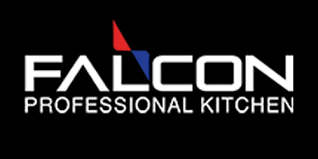How to Choose Professional Kitchen Equipment that Matches Your Menu

How to Choose Professional Kitchen Equipment that Matches Your Menu
Choosing professional kitchen equipment that aligns with your menu is a key factor in creating an efficient, well-functioning restaurant kitchen. Your menu defines your restaurant’s identity, and your kitchen equipment is its backbone. But with the wide variety of tools and appliances available, how do you decide which equipment is right for you? Let’s break it down in a simple, conversational way.
Why Your Menu Should Guide Your Equipment Choices
Your kitchen equipment should reflect the needs of your menu. Think of your equipment as the muscles of your restaurant, and your menu as the brain that directs the operations. If you’re serving up wood-fired pizzas, you wouldn’t invest in a deep fryer as your main piece of equipment. It’s like trying to run a marathon with a bicycle—it just doesn’t make sense.
Before jumping into buying professional kitchen equipment, take a closer look at your menu. Does it call for quick service, or are you creating slow-cooked meals that require more time? Does your cuisine involve a lot of grilling, frying, or baking?
Pro Tip: Make a list of the main cooking methods used in your top dishes. This will give you a clear idea of what equipment you truly need and help avoid overspending on unnecessary items.
Consider Your Kitchen Layout
Before diving into the specifics of equipment, take a hard look at your kitchen’s layout. How much space do you have, and how will it accommodate different appliances? Just like a well-orchestrated dance, your kitchen layout should allow smooth movement for your team. When choosing equipment, focus on space-saving options that still perform efficiently.
For example, compact ovens, multi-use fryers, or combo units (like a grill and oven in one) could be the answer if space is limited. On the other hand, if you have a large open kitchen, you might be able to spread out more and invest in bigger, standalone units. Always remember that an optimized kitchen layout is key to ensuring your staff can move freely without bumping into bulky equipment.
Energy Efficiency: The Long-Term Saver
Did you know that choosing energy-efficient equipment can significantly cut your overhead costs? This is where high-quality professional kitchen equipment becomes essential, both for performance and energy savings. Not only will it reduce your carbon footprint, but it can also save you thousands in energy bills over the year.
When shopping for new equipment, look for the Energy Star label or features that promote sustainability. For instance, energy-efficient ovens, refrigerators, and dishwashers might have a higher upfront cost but will pay for themselves in the long run.
Thinking about reducing energy costs in 2024? Consider energy-saving kitchen equipment as part of your investment.
Durability: Invest in Quality for the Long Haul
It’s tempting to cut corners by buying cheaper equipment, but don’t fall into that trap. Lower-end appliances might cost less upfront, but they often require frequent repairs or replacements, which adds up over time. Invest in durable, high-quality kitchen equipment that can withstand the demands of your menu.
Brands that chefs trust are typically built to last. For example, professional kitchen equipment from leading suppliers is made to handle the intense use that restaurant kitchens experience daily. Look for equipment made of stainless steel or other heavy-duty materials that can resist rust, corrosion, and damage over time.
Multi-Functionality: Get More from Less
If you’re working with a smaller budget or tight kitchen space, multi-functional equipment is your best friend. These versatile tools combine multiple functions into one appliance, saving both space and money.
For instance, consider getting a combi oven that can roast, steam, and bake all in one unit. A food processor with multiple blades can chop, slice, and dice in seconds, replacing a host of separate gadgets. Not only do these appliances offer flexibility, but they can also help speed up preparation time, which is critical during a busy dinner service.
Matching Equipment with Specific Menu Items
Let’s go a little deeper into how certain types of equipment match different cuisines. The equipment you need for a bakery, for example, will be quite different from what a steakhouse requires. Here’s a quick look at how specific menu items dictate equipment choices:
- Pizza – You’ll need a pizza oven, preferably one that reaches high temperatures for that perfect crispy crust.
- Fried Foods – A deep fryer is non-negotiable if your menu is packed with crispy fried delights.
- Grilled Meats – An industrial grill, charbroiler, or griddle is essential if grilled meats or sandwiches are the stars of your menu.
- Pasta Dishes – Invest in a good quality pasta cooker or boiler to handle large orders efficiently.
- Pastries and Desserts – A commercial oven, dough sheeter, and mixer are your best bets for consistently good bakes.
Each of these categories requires unique equipment that directly impacts how well you can execute your dishes.
Budgeting Wisely: Don’t Overspend on What You Don’t Need
The excitement of equipping your kitchen can make it easy to overspend. But remember, every item on your equipment list should have a specific role in supporting your menu. While it’s great to have the latest gadgets, ask yourself—does this piece of equipment genuinely improve efficiency or quality? If not, skip it for now.
Instead, focus on the essential tools that will have the most impact on your day-to-day operations. Prioritize quality and durability, especially for items like ovens, refrigerators, and stoves that are used frequently.
Conclusion
Choosing professional kitchen equipment that complements your menu is all about balance. You want to ensure you’re buying what you need without going overboard. Consider the type of cuisine you offer, how your kitchen space is laid out, and long-term benefits like energy efficiency and durability. By aligning your equipment choices with your menu’s needs, you’ll not only improve kitchen efficiency but also save on costs, keeping your restaurant running smoothly.
FAQs
1. How do I know which equipment is essential for my kitchen?
Make a list of the primary cooking methods your menu requires. This will help you identify the key pieces of equipment needed, such as ovens, grills, or fryers.
2. What should I consider when choosing energy-efficient equipment?
Look for appliances with the Energy Star label or other certifications that highlight energy efficiency. These will help reduce your utility bills over time.
3. How can I make the most of a small kitchen space?
Consider multi-functional equipment that can perform several tasks. This way, you save space without sacrificing performance.
4. How do I balance cost and quality when buying kitchen equipment?
Focus on investing in durable, high-quality items that will last. Cheaper equipment may break down faster, leading to higher repair or replacement costs.
5. What are the top professional kitchen equipment brands to consider in 2024?
Some of the top brands chefs trust for reliability and durability include those highlighted in this discussion on 2024 equipment. Always opt for trusted brands with a reputation for quality.







